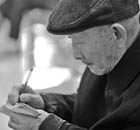Society
A city hospital's attempt to bail the needy out
(Xinhua)
Updated: 2010-04-09 15:14
 |
Large Medium Small |
HAIKOU - Huang Jinzhong thought it was a joke when his fellow villagers told him to go to a free hospital for colon cancer treatment. But now he is awaiting free-of-charge chemotherapy after having had the surgery for free, too.
Diagnosed with the illness more than three years ago, the farmer from Baoting Village, Wuzhishan city, on southern China's Hainan Island, has been struggling with worsening health and financial strains.
Huang knew he could not afford the treatment. The cost of his medical treatment has so far risen to almost 45,000 yuan ($6,592), more than 22 times his 2,000-yuan annual income. And the follow-up chemotherapy would push the costs higher still.
Initiated by the government in 2002, the New Rural Cooperative Medical Care System makes medical treatment more accessible in less developed rural areas, with rural residents having 50 to 60 percent of their medical expenses reimbursed, depending on the illness they have and the hospitals they go to.
"Unable to afford the bills, many farmers previously would keep their serious illness to themselves rather than adding to their families' financial burdens by seeing a doctor," Huang said.
These days, however, Huang feels comfortable talking about his ailment, recovery and the cost of treatment. When given a bill after each treatment session at the Second People's Hospital of Hainan Province in Wuzhishan, he was only required to give his signature.
Nearly 1,000 needy patients have been treated at an aggregate cost of five million yuan since the hospital launched a program for poor rural residents last June. The program is called "Huimin, " which means "benefiting the people."
In an attempt to help the rural needy unable to afford to see a doctor even after having joined the existing cooperative medical care system, the hospital initiated the service with the endorsement of the provincial government.
On a trial basis, public donations, medical insurance, funds from the rural cooperative medical care system, and a medical fund allocated by local civil affairs department have been mobilized to foot the bill.
At present only six cities and counties - Wuzhishan, Baoting, Qiongzhong, Baisha, Ledong and Changjiang - have access to the service. The areas, situated in the province's hilly central areas, are all inhabited by ethnic minorities.
Convincing the sick to see a doctor
One difficulty facing the hospital, President Rao Huimin recalled, was persuading sick villagers to come to the hospital without concerns about costs.
"Many patients treated here were scared away by the rough estimate of the cost of the medical treatment," he said.
Gao Rilan, a 64-year-old with hyperthyroidism, for instance, had postponed her treatment for more than six years. But for a hospital medical team coming to her village, Dayao of Baisha Li in the Miao Ethnic Minority Autonomous County, she may have never received treatment.
"I dared not think of seeing a doctor before. Now if I feel discomfort, I go to the hospital right away," she said.
To qualify for the "free treatment," patients like Gao must carry a certificate issued by local government to prove they fall into the categories officially confirmed as "extremely needy", including those who are childless, of old age and relying on government stipends for food, clothing, medical care, housing and burial expenses, and the urban and rural poor stricken by severe diseases.
In order to minimize inpatients' expenses, the hospital provides free beds for caregivers and public kitchens where patients and their caretakers can use electricity and water for free.
Zhou Haisong, son of Gao Rilan, brought over rice and shopped in nearby farmers' markets to cook meals for his mother every day.
"Additional charges from patient nursing have all been relieved here. We did save a lot of money," Zhou said.
"It is word of mouth that persuaded needy villagers to try what they call the 'free hospital' here. While that is not 100 percent true, none of the patients need to pay their bills," Rao said.
Not losing money yet
The financial statements of the program is the thing Rao has been worrying about during the program's trial operations over the past 10 months.
"From the beginning till now, many people's biggest concern over our 'Huimin Branch' is who pays the bills and how long it can sustain itself," Rao said. "I can tell you we are not losing money. We even made a small profit."
"Medical fund allocated by civil affairs departments, cooperative medical care funds and other policy guarantees from the government are sufficient to sustain the branch for now," said the smiling Rao.
He admitted that on average 70 percent of medical expenses are reimbursed by governmental funds and medical insurers who have inked payment agreements with the hospital.
"This percentage of reimbursement is basically enough to cover the branch's operation cost," said Rao.
To widen sources of funding, the hospital has launched a web site to solicit public donations. On a quarterly basis, the local civil affairs, health and financial departments conduct a joint overhaul of the hospital's financial status to make sure every penny has been rightfully used.
Provincial Health Bureau chief Bai Zhiqin said the operations are, "So far so good".
But uncertainty persists, with some worrying about any rapid increase in the number of inpatients, fund shortage, as well as rising operational costs.
"When conditions are right, we will consider duplicating the Huimin model across the province to help the needy and ill to prevent them from sinking deeper into poverty," he said.
Official figures show about 495,200 people -- equivalent to 9.9 percent of local rural population -- in Hainan live in poverty, with annual per capita net income below the official poverty benchmark of 1,393 yuan.
Most of these people reside in Hainan's hilly central areas and its eastern lands which are vulnerable to drought.
Each year, about 10 percent of those who lifted themselves out of poverty will become destitute again because of illness.
In 2008 China reported 40.07 million people earning less than the 1,196-yuan-per-annum poverty benchmark, according to statistics from the State Council Leading Group Office of Poverty Alleviation and Development.











